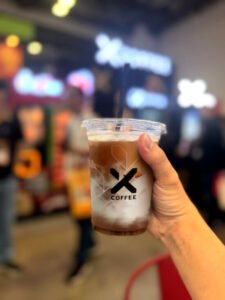Wednesday, 15 October 2025
AI benefits alcohol industry: IWSR
The technology is mostly being used in two main areas: new product formulation, often linked to marketing activity; and driving increased efficiency across company operations Beverage alcohol brand owners are…

The technology is mostly being used in two main areas: new product formulation, often linked to marketing activity; and driving increased efficiency across company operations
Beverage alcohol brand owners are using artificial intelligence (AI) as a research tool and an aid to new product development – but the technology has the potential to deliver additional benefits across company operations, from revenue management to production efficiency.
According to IWSR, the use of AI within beverage alcohol is still in its infancy, and for now, the technology is mostly being used in two main areas: new product formulation, often linked to marketing activity; and driving increased efficiency across company operations.
In many cases, AI is used to inform NPD and subsequent marketing campaigns. are one-off projects, such as online drinks retailer The Whisky Exchange’s use of AI to design labels for a luxury collection of 12 bottles of The Glenlivet 50-year-old single malt, sold for €40,000 a bottle to mark the distillery’s bicentenary in 2024.
Other examples include NanoFizz, a 7 per cent ABV RTD product from Germany’s Katlenburger Winery, claimed to be Europe’s first AI-generated RTD cocktail; and two new ‘AI’ wines unveiled by Wine of Moldova at this year’s Prowein trade fair in Germany.
In both cases, product development involved a combination of machine learning and human skills: Katlenburger used AI in the naming, recipe and design of the RTD, but still required the expertise of specialist fruit winemakers to finalise the recipe.
AI was involved in every aspect of the creation of the Moldovan wines – harvesting, winemaking, blending, labelling and communication – but the physical work and the blending process were performed by people.
Some brand owners are also employing AI to drive quality improvements: Minnesota-based von Stiehl Winery used the technology to develop its AI White and AI Red wines, encouraging purchasers to give feedback and tasting notes – which will then be used to generate AI recommendations to improve the quality of the next batch of the wines.
Meanwhile, researchers at KU Leuven University in Belgium used machine learning to analyse 250 beers, alongside consumer reviews and tasting notes, to construct models predicting how beers of different compositions would taste, and how positively they would be received.
The results were used to tweak the recipes of existing commercial beers, playing up components that the data suggested were predictors of improved appreciation, such as lactic acid and glycerol – with positive results in human trials for both full-strength and no-alcohol beers.
Other businesses are embedding AI more deeply into their NPD processes. For example, Sapporo Breweries partnered with IBM Japan to establish N-Wing Star, an AI system to create new products.
It analysed about 1,200 product formulations, and 700 raw materials used in 170 existing products, to create Otoko Ume Sour Salty Plum, a 5 per cent ABV chuhai (canned carbonated RTD cocktail) launched in Japan in 2023.
The company claimed that using AI saved time on various aspects of NPD by 50-75 per cent, and is now fully adopting the system as a key component of its future new product development.
Technology
Chulalongkorn University students reimagine Thai classic with health-conscious Pork Knuckle Trio
Oct 15, 2025 | Academic
Norwegian model leads way in sustainable seafood and zero-waste innovation
Oct 14, 2025 | Europe
XCoffee introduces AI-powered smart robotic beverage
Oct 14, 2025 | Beverages
Food Testing
South Australia now tomato virus free
Oct 13, 2025 | Australia
Inside Agilent’s Strategy to Make India Global Benchmark in Food Testing
Oct 10, 2025 | Food Safety and Testing
Arya.ag wins SmartAG Award 2025 for climate-resilient farming solutions
Oct 01, 2025 | Awards
More Popular
LT Foods acquires Hungary based Global Green Europe Kft
Oct 15, 2025 | Company News
Caraway Tea Company launches Infusion Technology, merging tea and supplements for enhanced wellness
Oct 15, 2025 | Beverages
Penelope Bourbon unveils Apple Cinnamon Old Fashioned cocktail
Oct 15, 2025 | Beverages






